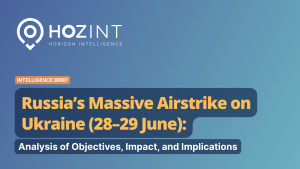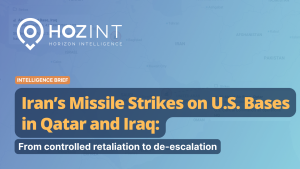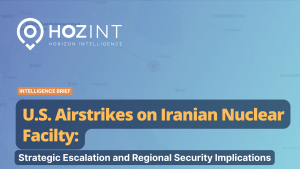Sri Lanka faces an unprecedented economic and political meltdown that has pushed the government into a deep crisis and triggered violent protests. On May 9, months of peaceful demonstrations turned violent, leading to the resignation of prime minister Mahinda Rajapaksa. The intensifying political friction between anti-government protesters and security forces is threatening a greater humanitarian disaster in Sri Lanka, a multi-ethnic nation of more than 22 million people. Violence is likely to escalate along with the country’s economic deterioration with increased potential for significant disruptions across several industries for a long term period.
Timeline of events:
- – On March 31, at least 50 people were injured, including 3 journalists and 15 security forces personnel, and 45 people were arrested during ongoing protests against the country’s enduring economic crisis outside President Rajapaksa’s private residence in Mirihana.
- – On April 1, the Sri Lankan government declared a public emergency.
- – On April 2, President Gotabaya Rajapaksa ordered the deployment of military forces to arrest protesters throughout the country.
- – On April 3, Sri Lanka’s Cabinet of Ministers had submitted their resignations amid ongoing protests.
- – On April 4, thousands of protestors demonstrated against President Gotabaya Rajapaksa, calling for his resignation in Colombo. Simultaneously the opposition rejected the President’s invitation to join a unity government.
- – On April 12, the Ministry of Finance announced that Sri Lanka would default on all external debts.
- – On May 9, after 2 months of continuous protests across the country, pro-government supporters attacked an anti-government protest site in Colombo. Additionally, the Sri Lankan Prime Minister Mahinda Rajapaksa resigned.
- – On May 10, the Sri Lankan Defense Ministry reportedly issued shoot-on-sight orders to quell ongoing riots.
- – On May 11, the Sri Lankan government deployed the military to maintain order amidst civil unrest in Colombo and its suburbs.
- – On May 12, Ranil Wickremesinghe was sworn in as the new Prime Minister of Sri Lanka.
- – On May 16, the Sri Lankan prime minister stated that the country had run ‘out of petrol’. Only 1 day of stocks is reportedly left. Daily power cuts may last up to 15 hours.
Analysis
President Gotabaya Rajapaksa’s refusal to step down sets the stage for prolonged civil unrest. The focus should be on the immediate actions that the government will take in the following weeks to bring a certain level of order and economic stability. While the resignation of Prime Minister Mahinda Rajapaksa on May 9 was deemed a successful outcome for the protestors, violent clashes with government forces have not decreased and could spiral to unprecedented levels of aggression. Up until then, 8 people have been killed, and more than 300 participants have been injured.
Right from the outset, Sri Lanka has only recently emerged from a violent civil conflict in 2009 and faced a devastating terrorist attack on Easter Sunday in 2019, killing more than 269 people. Via this turmoil, in 2019, President Rajapaksa rose to power, promising economic stability and recovery.
However, the COVID-19 pandemic devastated the tourism industry, which makes up the country’s fifth-largest source of foreign revenue. As a result, by the beginning of 2020, the country’s foreign-exchange reserves had dwindled, hindering its capacity to import necessary commodities such as food, medicines, and fuel. Since then, the island nation has struggled to import necessities because of diminishing foreign reserves and crippling debt.
Lacking the capacity to import oil, the country has also struggled to maintain its textile industry, another ‘pillar’ of foreign income, with export earnings increasing by 22.1% to 514m USD in January 2022.
In 2016, the nation succeeded in regaining its preferential trade status under the European Union’s Generalized System of Preferences Plus, providing the opportunity to many of its firms to export garments tax-free to the EU. That made the Sri Lankan textile production industry extremely appealing to a multitude of international companies such as Nike Inc., Victoria’s Secret & Co. and Calzedonia Holding SpA. However, many overseas buyers consider abandoning the Sri Lankan production with the recent crisis.
Hence, the country sought immediate assistance from the IMF to obtain a bailout package in exchange for fiscal reforms, including a sovereign debt restructuring.
Besides the domestic dimension, the Sri Lankan crisis reflects a more significant geopolitical conundrum between China, India, and the US. From a geographical point of view, the country is located amidst the Indian Ocean, whereas more than 80% of the global seaborne oil trade passes through. Therefore, maintaining control and influence in the area is critical for the 3 countries.
Indian support towards the recent crisis was immediate, following a 1bn USD credit line to supply essential commodities. In contrast, many have pointed out that the continuous flow of Indian capital and administrative support can develop a long term dependency. Moreover, in the case of China, Sri Lanka poses a particularly significant geopolitical asset since it is part of the Chinese Belt and Road Initiative, including the island’s Hambantota Port and Port City.
Finally, on August 4, 2017, the Sri Lankan government signed an open-ended Acquisition and Cross Services Agreement (ACSA) with the United States, facilitating mutual logistic support between the 2 countries. Consequently, the current crisis can be interpreted as a broader geopolitical fight for dominance among the 3 actors.
President Gotabaya Rajapaksa has not taken responsibility for any of these outcomes, directing his blame toward the external influences such as the recent pandemic and rising oil prices for the present Sri Lankan economic deterioration. At the same time, the anti-government protesters do not appear to focus on the international dimension of the current crisis.
Therefore, all these parameters accumulate toward a volatile political environment that the current government appears incapable of facing. Consequently, many of the protesters have associated the recent deterioration of their country solely with the ruling of President Rajapaksa, demanding the resignation of both Rajapaksa brothers.
Forecast
Ostensibly, the most likely scenario in the following week will be the increase of violence and civil unrest throughout Sri Lanka due to the economy’s current situation, but more importantly, the refusal of President Gotabaya Rajapaksa to resign from his position.
Additionally, with the recent announcement on May 16 that the country is officially incapable of providing petrol, the political pressure against the government will rapidly increase from the social grievances caused by this insufficiency.
A less likely scenario would be a gradual improvement of the current economic situation with a steady decrease in violent protests and the complete disruption of normality that the country is currently experiencing.
Nevertheless, that would entail the immediate financial assistance of foreign actors such as China and India, significant creditors to Sri Lanka. However, this might prove extremely difficult since China has publicly voiced displeasure with Sri Lanka turning to the IMF for aid. Simultaneously, India is openly offering help that could only be described as a Trojan horse tactic, over-extending its influence and control over multiple critical functions of the Sri Lankan economy. On top of everything else, the resignation of President Gotabaya Rajapaksa would be a given if the immediate goal was to try and appease all the frustrated citizens that have linked the calamities they are facing with the face of their leadership.
Finally, a worst-case scenario, under the premise that President Gotabaya Rajapaksa does not choose to resign and the economy does not bounce back to relative normalcy in the following month, is that the current government will likely increase its reliance on military forces to subdue civil unrest. Over the last 2 months, the government has sought to disperse protesters with the help of military forces, even ordering security forces to shoot ‘law-breakers’ on sight. Such a political choice would undermine the rule of law and the democratic aspect of the government, potentially leading to disastrous outcomes resembling the Sri Lankan civil war.
By Panagiotis Kotzias, Risk Intelligence Analyst at Hozint – Horizon Intelligence




